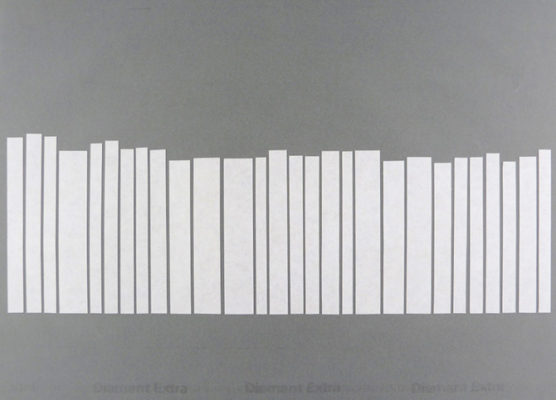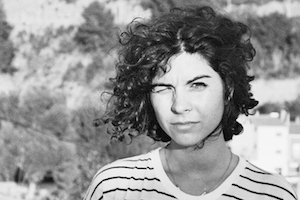Search
To search for an exact match, type the word or phrase you want in quotation marks.
A*DESK has been offering since 2002 contents about criticism and contemporary art. A*DESK has become consolidated thanks to all those who have believed in the project, all those who have followed us, debating, participating and collaborating. Many people have collaborated with A*DESK, and continue to do so. Their efforts, knowledge and belief in the project are what make it grow internationally. At A*DESK we have also generated work for over one hundred professionals in culture, from small collaborations with reviews and classes, to more prolonged and intense collaborations.
At A*DESK we believe in the need for free and universal access to culture and knowledge. We want to carry on being independent, remaining open to more ideas and opinions. If you believe in A*DESK, we need your backing to be able to continue. You can now participate in the project by supporting it. You can choose how much you want to contribute to the project.
You can decide how much you want to bring to the project.

I consider knowledge to be a common good, one that benefits the collective and enables egalitarian development. I defend free knowledge and as I consume art for knowledge, I question its accessibility.
If formerly it was customary to hear talk of the impenetrability of the art circuit, of the Ivory Tower in which the artist lived and of artworks as exclusive possessions, the same can’t be said today, at least not predominantly. With the advances of technology, both the artist and the work go out, with an apparent proximity, into the public arena, now the Internet. On the other hand, some institutions, heeding the new needs of today and noticing the potential of technology, incorporate into their proposals online exhibition guides, digital archives, live streaming of talks or directly with a virtual museum. Forming part of the online reality where neither physical nor temporal distances exist. The distances between the creation-circuit and the consumption-circuit-are now, therefore, connected within the same space that serves as much for learning, realisation as for enjoyment.
We publish, share and download our own archives and those of others, quite freely, openly ignoring in the majority of cases legality. The right to knowledge is placed over and above the rights of the author. This desire to consume and share pushes authors, as well as the industry, to reconsider the system of distribution and monetization of their work. A few months ago, the digital artist Solimán López commented in a talk [[In the round-table discussion, ‘Digital art, archives and contemporary alternatives’, at Arts Santa Mònica, 2017.]] that he believed in an angry birdstyle of distribution: many copies at an affordable price for everyone. Others, like Radiohead [[Radiohead decided to sell their record “In Rainbows” (2008), through their website. The price of the download was established by the fans they decided how much money they wanted to give to support the work of the British band. During the first week of placing the record online, 1.200.000 people downloaded it, each person paying an average of six euros, granting the group earnings of a record 7 million euros. On the 23 June of this year they published their latest work, a re-edition of their mythic and acclaimed “OK. Computer”, and it has been published with the same philosophy as “In Rainbows”, without a record company and through downloading from their web.]], wagered on abandoning record companies, offering downloads of their publications in exchange for a voluntary payment chosen by the consumer and it is worth saying achieved more income than when they published with a stipulated price. Others opt to offer their songs and films freely, making money in concerts, cinema halls or festivals. Or, as in the case of photography or paintings that are shared online, it is through exhibitions, sales, grants or complementary activities – like seminars- where their profits are to be found. And what about performance, can we imagine Yves Klein passing round the hat after his leap into the void? Pay as you exit to see Abel Azcona in action?
To offer one’s own creations in this way responds to different motives: for principles, out of a disinterested desire to share, as a strategy to become known… Arctic Monkeys [[Wikipedia: In 2003 after several presentations, the Arctic Monkeys began to record demo-tapes and burn them onto CDs to give them out at concerts. With a limited number of CDs available, the fans started ripping the music on their computers and sharing it amongst themselves. The group didn’t mind, saying; “we never made those demos to make money or anything. We were giving them away free anyway — that was a better way for people to hear them. And it made the gigs better, because people knew the words and came and sang along”. They didn’t want to take responsibility for the diffusion of their music, admitting they didn’t know even how to put it on the Internet. When a journalist from Prefix Magazine talked to them about the popularity of the band on MySpace, the members of the band admitted they didn’t even know what MySpace was and that their official webpage, had been created by their fans. ]] gave away their first CD in the first concerts, which led them very quickly to fame, long before the platforms destined for production such as Myspace, Soundcloud, Bandcamp, Flickr, Instagram, Youtube, Vimeo, blogs, etc, were considered promises of success. The sum of the models of fulfilment, on the part of some of their users does nothing more than confirm it. How many You-Tubers from nowhere are now working as actors for films where they are the very delicacy for the public? Fame, an objective or a consequence? Famous people who made themselves through the Internet, who now have as many followers as any Hollywood star – do we remember where Justin Bieber [[The mother of Justin Bieber placed on YouTube videos of her son interpreting songs so that close friends and family could watch them. Scooter Braun, an ex-marketing executive accidentally saw one of his videos in 2008 on the Internet while looking for videos of another musical artist. Impressed he proposed recording a demo, and he was soon singing with Usher, who would become his manager. That same year he signed with the record company Island Records and his musical career began.]] came from-. Which ends up turning many into addicts of express production in search of a dream of personal recognition, leaving the quality of their production on a secondary plane. Activating, once again, the eternal debate about what is art and what isn’t.
Personally, I don’t share the fanaticism I believe it unsettles the balance of values placing the artist over and above other professional agents, even above their own production. I truly believe that what ought to be made public are their creations, although up until now there are few who have contemplated publishing a film, record or book, although this approach is changing. Without going any further, the video art festival Loop is preparing a public digital archive [[In the press pack for this year, Loop announced they were working on a virtual platform that would house the content of the videos that had formed part of the festival since its beginnings. With the aim that video art rather than being an exclusive, marginal practice would become present in the interests and discussions of the public. ]] on the web, with the entire content of the videos that have passed through their editions. It’s an endeavour to foment dialogue and reflection in relation to video art, the pieces of video art have been and will continue to be collected, equally online visualizations will never have the same resolution, nor the same size, nor even the same material – depending on the piece in question. It’s also not the same to know as to possess. We therefore ought to distinguish between archives designed for consumption on the Internet and the original piece of artwork that is bought, collected and exhibited offline.
Just as libraries were not a threat for bookshops, we all know that Netflix is not a threat to the film industry. It’s not the same to see a film as to have it, nor is the experience of watching it in a cinema the same as watching it at home. The problem arises perhaps when one decides to extract the archive from Internet to make copies, to set up your exhibition with photographs by others, as Richard Price [[In 2015 Richard Price extracted photographs from Instagram and made an exhibition with them, placing them on sale without the authors’ consent.]], did, or to sell pirated films, as done by bootleg peddlers. That is to say, to make a profit out of the work of others without their permission. It is different than when someone consumes for domestic usage: out of curiosity or for pleasure, I even consider it a compliment to the author a demonstration of cultural interest that I wish could do nothing but grow.

Nerea Arrojería is an art historian specialized in photography. Among her lines of interest is the still or moving image used in contemporary societies, inside or outside the museum.
"A desk is a dangerous place from which to watch the world" (John Le Carré)